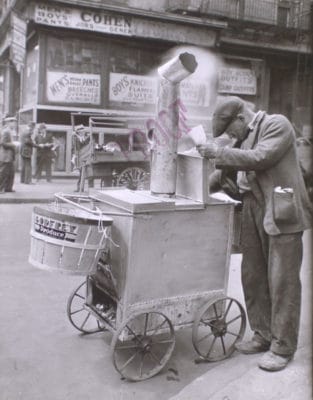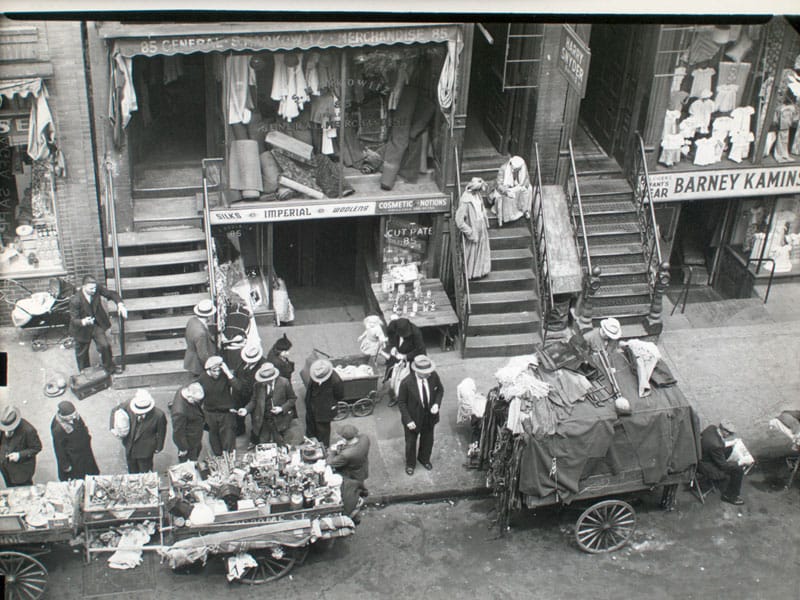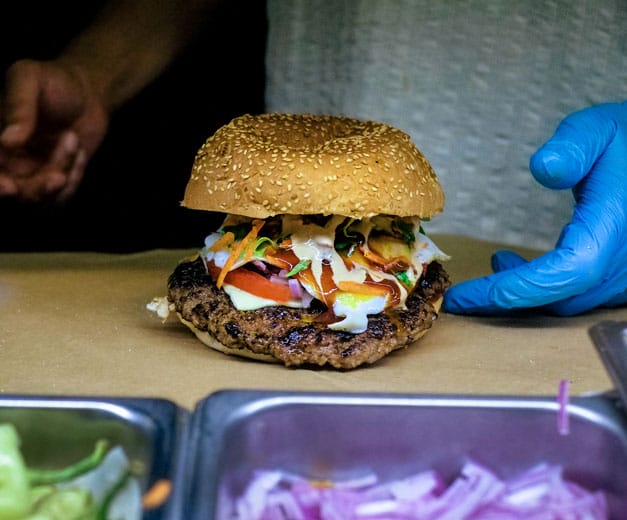Queens these days is New York’s street cart central. According to the Street Vendor Project, which advocates for vendor rights in the five boroughs, the largest concentration of street vendors with licenses lives in that borough. This concentration of streetside sellers is easy enough to see on six-mile-long Roosevelt Avenue, which runs through six of Queens’ most ethnically diverse neighborhoods with a dizzying assortment of vendors catering to almost every taste and nationality, depending on the time of day.
It’s not always easy work. At a recent monthly meeting of street vendors in Corona, Queens, the air was thick with grievances about the conditions they have to work under. Jorge and Narcissa, a couple who sells Ecuadorian food, told of repeatedly being ticketed or forced to move their cart because of complaints from a local businessman who doesn’t want them selling from in front of his store. The duo has explained to the storeowner about their right to vend, but “the owner calls the police, and the police come, and always make us move our cart.”
“How do we make a living with these constant troubles?” they asked.
 This profusion of street vendors – and the troubles they face – are nothing new; they’ve only migrated to another borough. In Manhattan and Brooklyn it was the same a hundred years ago. Immigrants plied carts and peddled merchandise up and down the Lower East Side’s crowded cobbled streets. Then and now street vendors were migrants, peddlers, hucksters and entrepreneurs, all rolled into one.
This profusion of street vendors – and the troubles they face – are nothing new; they’ve only migrated to another borough. In Manhattan and Brooklyn it was the same a hundred years ago. Immigrants plied carts and peddled merchandise up and down the Lower East Side’s crowded cobbled streets. Then and now street vendors were migrants, peddlers, hucksters and entrepreneurs, all rolled into one.
In 1906, several peddlers’ associations existed in New York City: The United Citizens’ Peddlers’ Association of Greater New York had six branches, four for Jews, one for Italians and one for Greeks. In addition, there was the Push-cart Vendors’ Association of Harlem and the Brooklyn Peddlers’ Association.
 According to the 1906 Report of the Mayor’s Push-cart Commission that focused on tenement areas of the Lower East Side and Brooklyn, 97 percent of the Lower East Side vendors were foreign born and mainly Jewish, Italian, and Greek; the origins of the rest were Austrian, Bulgarian, English, German, Hungarian, Irish, Spanish, Swedish, Turkish and American. Disparaged in the Report for being a threat to brick-and-mortar establishments and a menace to the order and cleanliness of the streets, Lower East Side and Brooklyn vendors persevered and later moved up the economic ladder to run lasting brick and mortar businesses.
According to the 1906 Report of the Mayor’s Push-cart Commission that focused on tenement areas of the Lower East Side and Brooklyn, 97 percent of the Lower East Side vendors were foreign born and mainly Jewish, Italian, and Greek; the origins of the rest were Austrian, Bulgarian, English, German, Hungarian, Irish, Spanish, Swedish, Turkish and American. Disparaged in the Report for being a threat to brick-and-mortar establishments and a menace to the order and cleanliness of the streets, Lower East Side and Brooklyn vendors persevered and later moved up the economic ladder to run lasting brick and mortar businesses.
For poor and migrant vendors today, nothing much has changed. They confront the same attitudes expressed in the 1906 Report and struggle to change minds and government policies. Watch this short video “Peddlers, Police, and Power: 1906 versus 2016” that pulls from the 1906 Report and archival photos.
 April 21, 2022 The Florist Bar
April 21, 2022 The Florist Bar
There are flowers all around us. Seeds and plants are scattered here and there. Herbs […] Posted in Naples March 22, 2016 Sasadilo Coca-Cola
March 22, 2016 Sasadilo Coca-Cola
There used to be a state-owned publishing house in our neighborhood with a cafeteria […] Posted in Tbilisi September 5, 2014 “Dirty” Dining
September 5, 2014 “Dirty” Dining
Athens has never been an in-bed-by-11-p.m. kind of city. We Athenians are all about […] Posted in Athens
Published on August 05, 2016
Related stories
April 21, 2022
NaplesThere are flowers all around us. Seeds and plants are scattered here and there. Herbs and fresh fruits rest in wicker and reed baskets. Sitting amongst all this glory is Stefania Salvetti, who is telling us about Paradisiello, where she lives. Meaning “Little Paradise” in Italian, Paradisiello is where Stefania has a home with 2,000…
March 22, 2016
TbilisiThere used to be a state-owned publishing house in our neighborhood with a cafeteria that served a proletariat menu that included ostri (beef stew), cold slices of beef tongue and cutlets with buckwheat or mashed potatoes. It was a stolovaya, which is the Russian word for “canteen,” but a more accurate translation would be “human…
September 5, 2014
Athens | By Ilias Fountoulis
AthensAthens has never been an in-bed-by-11-p.m. kind of city. We Athenians are all about having a good time for as much of the time as possible, so we’re often out drinking and dancing until the wee hours of the morning. And then of course it’s time for a pick-me-up from one of the city’s vromiko…


















































































